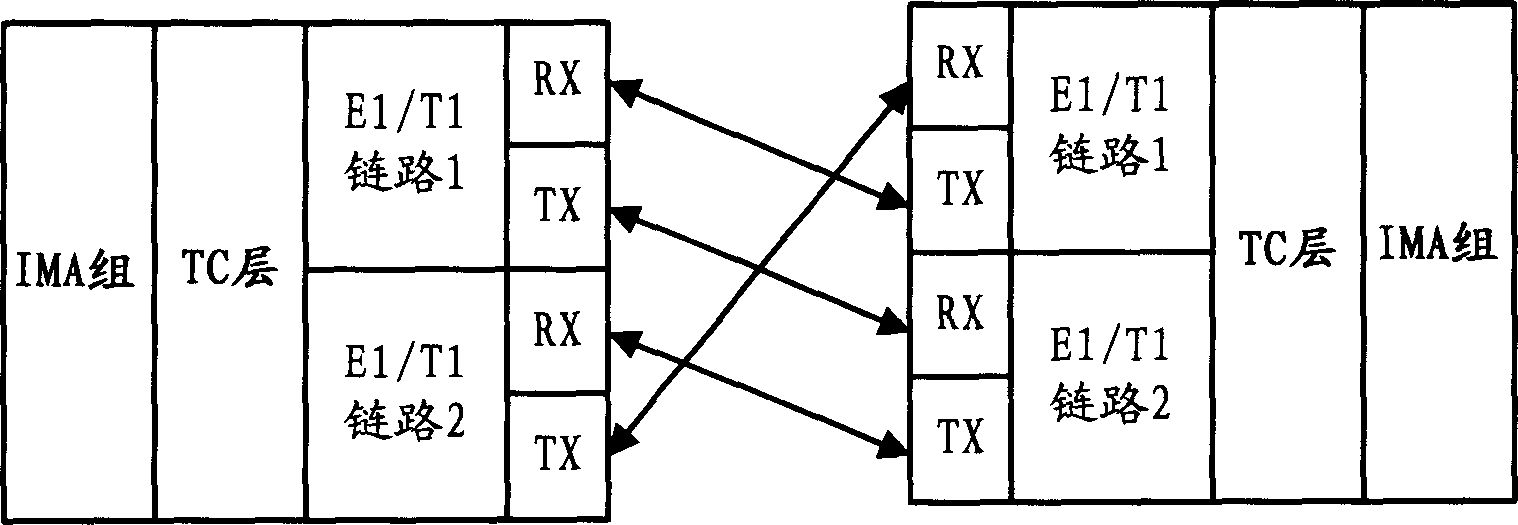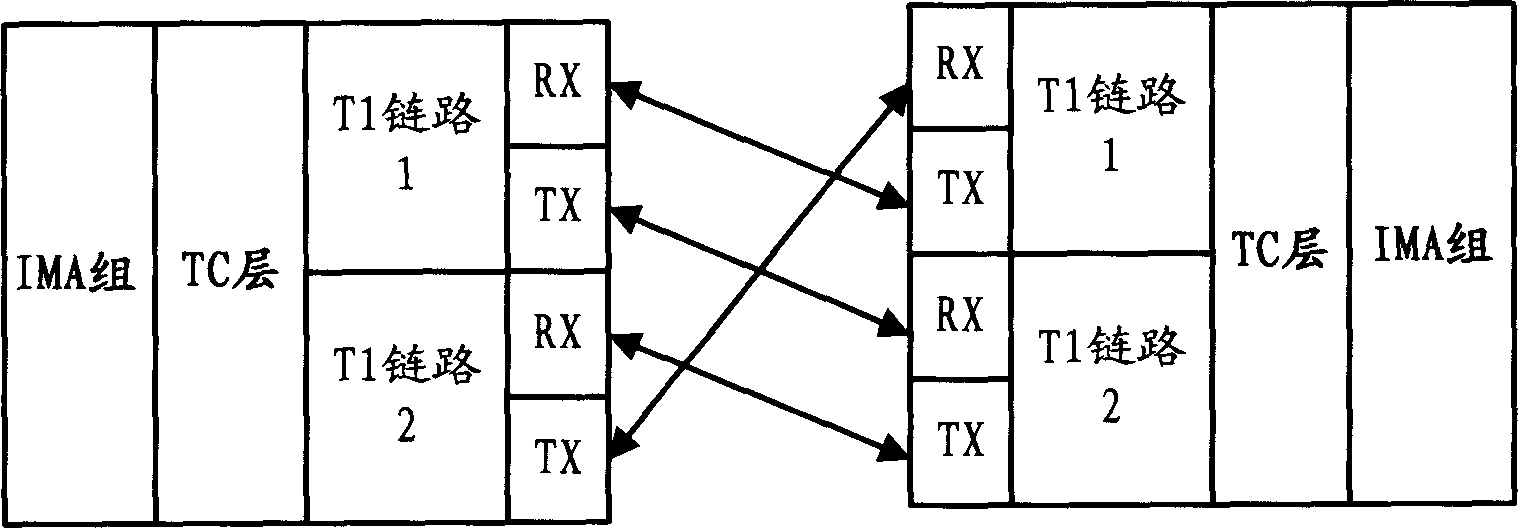Method for detecting E1/T1 connection error
A connection error detection and connection technology, used in digital transmission systems, data exchange networks, electrical components, etc., can solve the problem of inability to test data to add information with specific meanings, connection errors, and inability to identify physical equipment. question
- Summary
- Abstract
- Description
- Claims
- Application Information
AI Technical Summary
Problems solved by technology
Method used
Image
Examples
Embodiment Construction
[0036] In order to make the purpose, technical solution and advantages of the present invention clearer, the present invention will be further described in detail below in conjunction with the accompanying drawings.
[0037] In the first embodiment of the present invention, when two communication devices are directly connected in T1 mode (such as image 3 shown), can be based on Figure 4 The flow chart of the method is shown to detect whether there is a physical connection error in the T1 link. The steps of this process are described in detail below.
[0038] Such as Figure 4 As shown, in step 410, the high-level data link control protocol controller (HDLC controller) sends and receives test signals to the T1 physical link at "FDL Bits". "FDL Bits" are reserved bits in the ESF frame in T1 mode. In the ESF frame, there are 24 control bits, of which 12 control bits (1, 3, 5, 7, 9, 11, 13, 15, 17, 19, 21) are reserved for data link communication at the sending and receiving...
PUM
 Login to View More
Login to View More Abstract
Description
Claims
Application Information
 Login to View More
Login to View More - R&D
- Intellectual Property
- Life Sciences
- Materials
- Tech Scout
- Unparalleled Data Quality
- Higher Quality Content
- 60% Fewer Hallucinations
Browse by: Latest US Patents, China's latest patents, Technical Efficacy Thesaurus, Application Domain, Technology Topic, Popular Technical Reports.
© 2025 PatSnap. All rights reserved.Legal|Privacy policy|Modern Slavery Act Transparency Statement|Sitemap|About US| Contact US: help@patsnap.com



